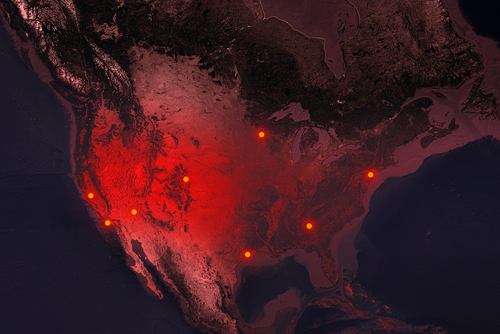
In a startling revelation that has raised eyebrows across the nation, intelligence officials have confirmed that a Chinese spy balloon traversed the United States for an entire week, employing the services of an American internet provider to facilitate its communication. This incident has sparked a wave of concern regarding the vulnerability of national security and the potential for foreign surveillance on American soil.
The balloon’s journey began when it entered US airspace over Alaska on January 28th and was subsequently tracked flying over sensitive sites, including the Malmstrom Air Force Base in Montana, which houses nuclear assets. It wasn’t until February 4th that the Air Force dispatched an F-22 fighter jet armed with an AIM-9X Sidewinder missile to neutralize the threat, shooting down the balloon over the Atlantic Ocean near South Carolina.
Kash Patel on Chinese spy balloon: “Intelligence was known to the Biden operation for months … Joe Biden’s national security policy once again failed America.”
— The Post Millennial (@TPostMillennial) December 29, 2023
Despite the unidentified internet service provider’s denial of involvement, reports indicate that the balloon was indeed connected to a US-based company and was actively communicating navigation data back to China. The method of transmission allowed for burst transmissions or high-bandwidth collections of data to be sent over short periods, raising serious questions about the extent of the information potentially gleaned by the Chinese operators.
The Chinese Embassy in Washington, through spokesperson Liu Pengyu, claimed the balloon was merely a weather research device that had unintentionally drifted into US airspace due to prevailing winds and limited steering capabilities. However, this explanation has done little to assuage concerns, especially in light of the Biden administration’s initial intent to keep the balloon’s presence under wraps.
Turns out when your president is not only owned financially, but subject to blackmail from the Chinese communist government, he will let a fully active spy, balloon, traverse the entire United States, and not do a damn thing about it.
— Even More Pissed Off Patriot (@POdPatriot) December 29, 2023
It has been disclosed that there were plans within the administration to study the balloon discreetly and allow it to pass without public knowledge. This approach has been met with criticism, as it suggests a significant lapse in transparency and a possible underestimation of the threat posed by such surveillance activities.
President Joe Biden downplayed the incident, suggesting that Chinese leaders might not have been aware of the balloon’s incursion. However, this stance has not satisfied those who believe that the administration should take a firmer stance on matters of espionage and foreign surveillance.
The incident has also exposed gaps in the United States’ intelligence gathering and defense mechanisms. Top military officials have acknowledged that the spy balloon program is ongoing, indicating that this may not be an isolated event and that future incursions could occur.
As the nation grapples with the implications of this security breach, questions remain about the adequacy of current measures to protect against foreign surveillance. The use of American infrastructure by a Chinese spy balloon to communicate with its home base is a stark reminder of the ever-present need for vigilance in safeguarding national interests against covert operations by adversarial states.












